
Tennis is a sports video game for the Atari VCS which was written by Activision co-founder Alan Miller and published by Activision in 1981.

Jungle Hunt, originally released as Jungle King, is a side-scrolling action game developed by Taito and released for arcades in 1982. It was originally distributed as Jungle King, then quickly modified and re-released as Jungle Hunt due to a copyright dispute over the player character's likeness to Tarzan. Jungle King, along with Moon Patrol released a month earlier, is one of the first video games with parallax scrolling.
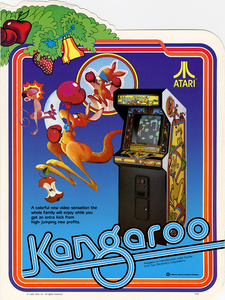
Kangaroo is a four-screen platform game released as an arcade video game 1982 by Sun Electronics and distributed in North America by Atari, Inc. Kangaroo is one of the first arcade games similar in style to Donkey Kong without being a direct clone. The player takes the role of a boxing glove-wearing mother kangaroo who is trying to rescue her joey from fruit-throwing monkeys. Jumping is integral to the game, but there is no jump button. Instead, the player pushes up on the joystick—or up and diagonally—to leap. The arcade version of Kangaroo has visible glitches in the graphics, such as sprites briefly flickering.

Venture is a fantasy-themed action game released as an arcade video game in 1981 by Exidy. Each level consists of a playable, overhead map view. Upon entering one of the rooms shown on the map, the game zooms in until the room fills the screen. As a round smiley-face named Winky, the goal is to collect the treasure in each of the rooms. Winky can shoot arrows at enemies which turn into slowly disintegrating corpses when hit. Corpses are deadly to the touch. Each room has a different layout, treasure, and enemies, and some rooms have special features, such as moving walls.

Super Cobra is a horizontally scrolling shooter developed by Konami, originally released as an arcade video game in 1981. It was published by Konami in Japan in March 1981 and manufactured and distributed by Stern in North America on June 22. It is the spiritual sequel to the Scramble arcade game released earlier in 1981. Super Cobra contains eleven distinct sections, versus six in Scramble, and is significantly more difficult, requiring maneuvering through tight spaces early in the game.

Wizard of Wor is an arcade video game released in 1981 by Midway. Up to two players fight together in a series of monster-infested mazes, clearing each maze by shooting the creatures. The game was ported to the Atari 8-bit computers, Commodore 64, Atari 2600, and Atari 5200 and renamed to The Incredible Wizard for the Bally Astrocade. The original cartridge came with a cash prize offer to the first person to complete the game.
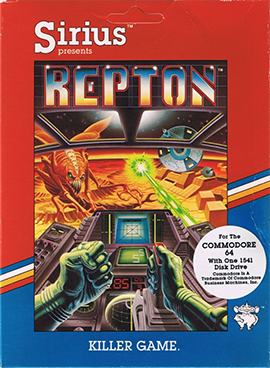
Repton is a Defender-inspired scrolling shooter written by Dan Thompson and Andy Kaluzniacki for the Apple II and published by Sirius Software in 1983. It was ported to the Atari 8-bit computers, and Commodore 64.
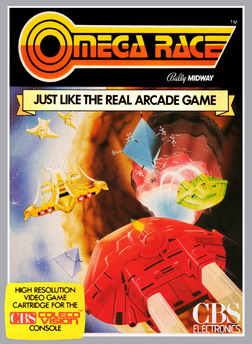
Omega Race is a shoot 'em up arcade video game designed by Ron Haliburton and released in 1981 by Midway. It is the only arcade game with vector graphics that Midway created.

Astro Chase is a multidirectional shooter written by Fernando Herrera for Atari 8-bit computers. It was published by First Star Software in 1982 as the company's first game. Parker Brothers licensed it, releasing cartridge versions for the Atari 8-bit family and Atari 5200 console in 1983 and a Commodore 64 version in 1984. Exidy licensed it for arcade use with its Max-A-Flex cabinet.

Megamania is a fixed shooter video game developed by Steve Cartwright for the Atari 2600. It was published by Activision in 1982. A pilot of an intergalactic space cruiser has a nightmare where his ship is being attacked by food and household objects. Using the missile launcher from their space cruiser, the pilot fends of the attackers. The game was later released for the Atari 5200 and Atari 8-bit computers.
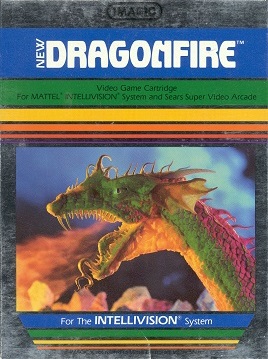
Dragonfire is a 1982 video game written by Bob Smith and published by Imagic. The player grabs treasure guarded by a dragon while avoiding fireballs. It was originally released for the Atari 2600 then ported to the Intellivision, VIC-20, Commodore 64, Apple II, ZX Spectrum, ColecoVision, and TRS-80 Color Computer.
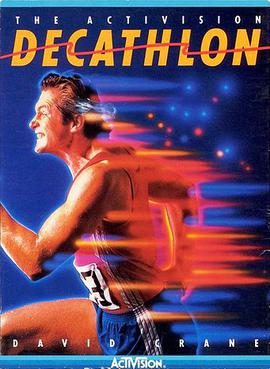
The Activision Decathlon is a sports video game written by David Crane for the Atari 2600 and published by Activision in 1983. It was ported to the Atari 8-bit computers, Atari 5200, Commodore 64, ColecoVision, and MSX. Up to four players compete in the ten different events of a real-life decathlon, either in sequence or individually.

Tutankham is a 1982 arcade video game developed and released by Konami and released by Stern in North America. Named after the Egyptian pharaoh Tutankhamun, the game combines a maze shoot 'em up with light puzzle-solving elements. It debuted at the European ATE and IMA amusement shows in January 1982, before releasing worldwide in Summer 1982. The game was a critical and commercial success and was ported to home systems by Parker Brothers.

Fast Food is an action game for the Atari 2600 written by Don Ruffcorn and published by Telesys in 1982.
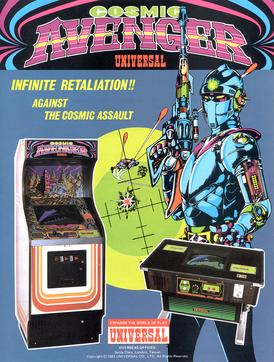
Cosmic Avenger is a scrolling shooter developed by Universal and released as an arcade video game in July 1981. It is part of the first wave shooters with forced horizontal scrolling which followed Konami's Scramble and Super Cobra from earlier in the year. It was released the same month as Vanguard. The final installment in Universal's Cosmic series, players take control of the Avenger space fighter and, as in Scramble, use bullets and bombs against enemy air and ground forces. The world is one continuous level made up of different areas.
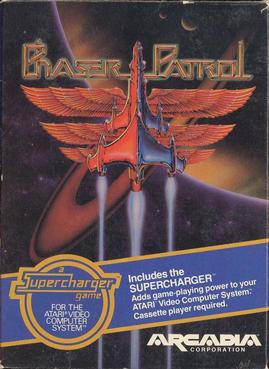
Phaser Patrol, written by Dennis Caswell, is the first numbered release by Arcadia for the Atari 2600 and the pack-in game for the Atari 2600 Supercharger accessory in 1982. The company changed its name to Starpath after launch, and the hardware was rebranded the Starpath Supercharger.

Space Cavern is a 1982 fixed shooter video game for the Atari 2600 developed and released by Games by Apollo. Players control a spaceship commander who has landed on a planet and must defend the ship against its hostile creatures. Games by Apollo founder Pat Roper was impressed by the game Demon Attack and tasked Apollo member Dan Oliver with making a game very similar to it.

Triple Action is an action video game produced by Mattel Electronics for its Intellivision video game system in 1981. The game actually includes three separate games—racing, tank combat and flying—where two players compete against each other for the best score.
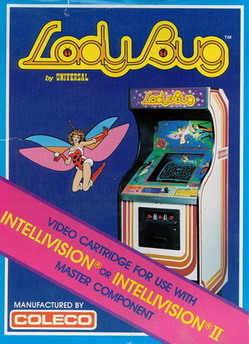
Lady Bug is a maze chase video game produced by Universal and released for arcades in 1981. Its gameplay is similar to Pac-Man, with the primary addition to the formula being gates that change the layout of the maze when used, adding an element of strategy to the genre. The arcade original was relatively obscure, but the game found wider recognition and success as a launch title for the ColecoVision console.




















